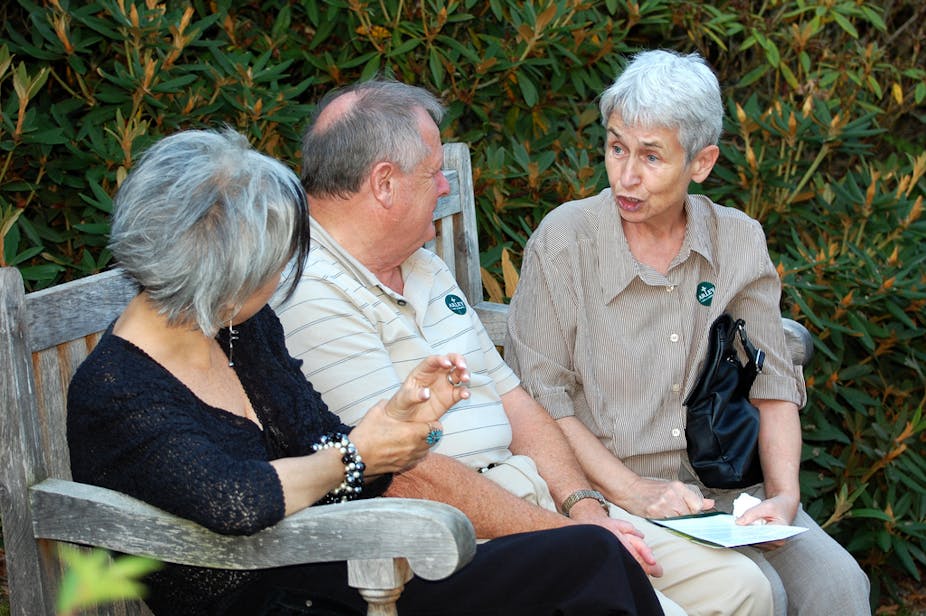TALKING ABOUT DEATH AND DYING – Can we be forced to live despite our wish to have our lives end at some natural point? What options do we have for having a say in how and when we are to die? Today we look at the main recourse for having a say in how our lives end.
Many people in the community fear the end stage of life, not because they’re afraid of dying but because they fear such things as the loss of mental faculties, control and dignity, being a burden on family and not receiving adequate pain relief.
This is often the result of having witnessed distressing deaths of loved ones, as illustrated in cases such as these:
-
Daughter: Mum always said she wouldn’t want to be resuscitated if her heart stopped, but they wouldn’t listen.
Wife: First of all he was stubborn when he was in hospital; he wouldn’t eat – he was just starving himself… so they had to force-feed him. They put a tube down his nose and then they had to tie him in the bed, because he kept pulling it out. He just didn’t want it.
Every competent person has a right to refuse treatment – even life-saving treatment – and the cases above are actually assault under the law in Australia.
Advance Care Planning provides a way for competent people who fear aggressive end-of-life treatment to record what kind of medical attention they would or wouldn’t want if they no longer had the capacity to make their own decisions.
There are two ways to do this: one is to write down your wishes in an Advance Directive; the second way is to appoint someone to make decisions for you once you’re no longer capable of deciding for yourself. Doing both gives greater certainty.

Advance Directives
An Advance Directive is a written document that ensures a person’s wishes are known. It also assists health-care providers to make decisions in line with what the patient desires and – because Advance Directives are legally binding in every state and territory in Australia – it gives people confidence that their wishes will be carried out.
You can also appoint a substitute decision maker (called an Enduring Guardian, Medical Agent or Enduring Power of Attorney for health matters) to make personal, lifestyle and/or medical and dental treatment decisions on your behalf, in case you lose the capacity to do so yourself.
This option is available in every state and territory except the Northern Territory, and the appointed person is usually a trusted relative or friend.
You can also appoint more than one substitute decision maker and say how they’re to make the decisions. The chosen person must agree to the appointment, should understand your wishes and be prepared to carry them out.
The appointment must be in writing, in an approved form, which must be signed by the person choosing their substitute decision maker/s; by the person or people appointed and; by an independent witness (depending on the state or territory this might be a solicitor, a justice of the peace or a Registrar of the Courts).
What if no-one has been appointed?
If there’s no Advance Directive and you haven’t appointed a substitute decision-maker, the legislation in each state/ territory provides for decisions to be made by the first person in a specified list.
In most states and territories, the order of authority starts with spouse (including de facto or same-sex spouse) and if there’s no spouse it moves to a non-professional carer. If there’s no carer, it’s usually or a close relative or friend of the patient.

It’s important to note that that the order of authority isn’t based on next-of-kin and the person who has the legal right to make health-care decisions may not be the person the patient themselves would’ve chosen.
How well do such arrangements work?
There’s a great deal of confusion in hospitals, residential aged-care facilities, and in the general community about Advance Care Planning (ACP). This confusion not only means that patients’ wishes for end-of-life care are often not respected, but it can also put health-care providers at risk of serious legal consequences.
Part of the confusion is caused by the fact that the law relating to ACP is different in every Australian state and territory, each of which uses different terminology and different documents. To start to address this issue, the Australian Government recently released the National End-of-Life Framework, which is promoting Advance Care Planning consistency across Australia.
A full listing of the laws in each state and territory can be found at the end of a discussion booklet End-of-life care for people with dementia (find downloads along the top menu line, scroll down to Publications and Reports, to the fourth document) published by Alzheimer’s Australia.
Most people want at least a measure of predictability and self-determination in relation to death and dying. Advance Care Planning can help to provide that.
This is the sixth part of Talking about death and dying. To read the other instalments, click on the links below:
Part One: Deadly censorship games: keeping a tight lid on the euthanasia debate
Part Two: End of the care conveyor belt: death in intensive care units
Part Three: Curing or caring: the importance of being honest
Part Four: Death and despair or peace and contentment: why families need to talk about end-of-life options
Part Five: Body or soul: why we don’t talk about death and dying
Part Seven: A challenge to our leaders – why don’t we legalise euthanasia?
Part Eight: A personal account of life with terminal cancer

